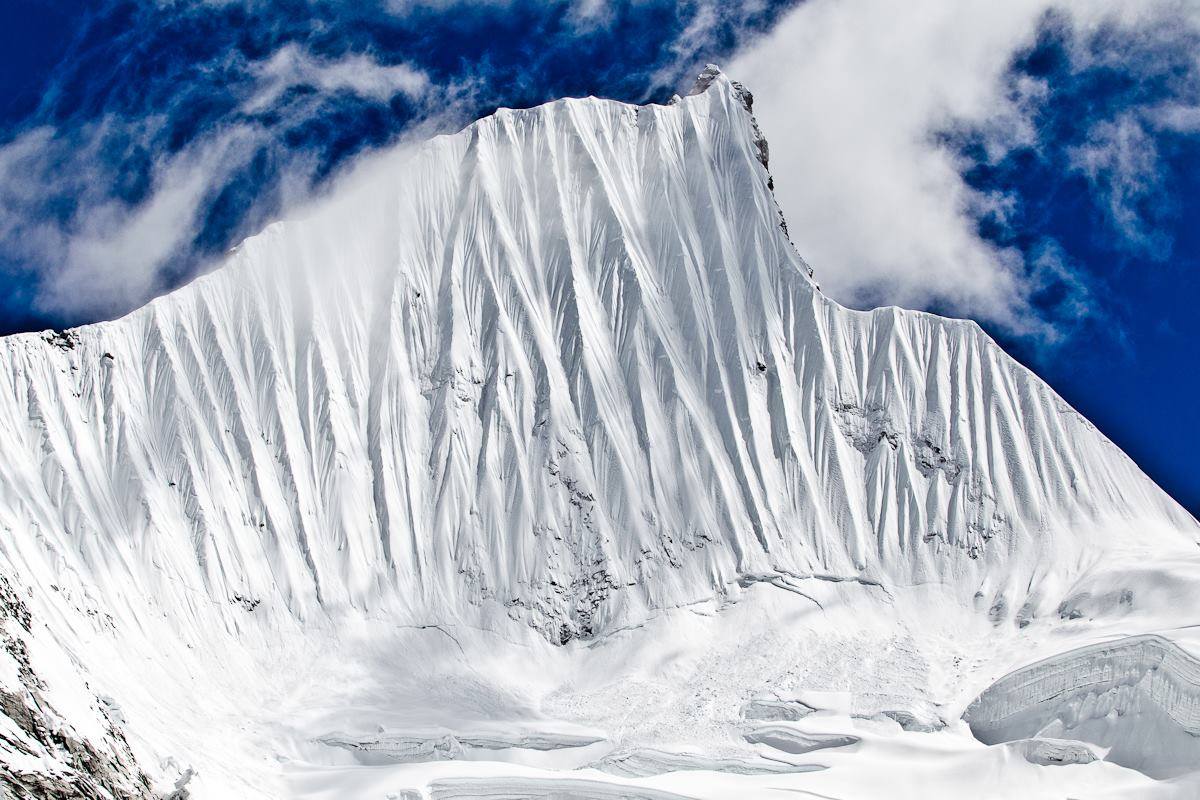 The Shangri-La spine wall–the line of a lifetime for Jeremy Jones in TGR's Higher. Andrew Miller photo.
The Shangri-La spine wall–the line of a lifetime for Jeremy Jones in TGR's Higher. Andrew Miller photo.
All the way back in June, following the death of American wingsuit pilot Brian Drake, we posed a question to our audience: are deaths in action sports "okay?" While not an easy question to consider, let alone offer a reply to, we received a great number of comments from a huge variety of perspectives in our audience and from around the world. In their sum, they occupied the great gray area between the hard-nosed answers of "yes" or "no," and reminded us just how nuanced our approach as a community to risk is, and how much of it, and in what form, for what reason, and with what at stake, makes sense for us to enjoy the life-changing experiences we all strive for and enrich ourselves from doing the kinds of activities we love.
Only a few weeks ago, we undertook the unfortunate task of reporting on the deaths of three of snowsports' most inspiring figures: steep skier Andreas Fransson, skiing legend J.P. Auclair, and snowboarder Liz Daley, who herself had been writing as a Contributor to Tetongravity.com only a few months prior. The process of eulogizing these three, who were so dear to us and to so many, was plainly a painful process, and itself provoked many searching answers to the question we raised back in June.
While the nerve may still be raw from that awful bit of news on October 1st, we thought it might be a productive exercise to look back on what our audience has said about their own perspectives on life, death, and living on the edge, in the hopes that we can all take on some introspection before diving into the excitement and thrill of the upcoming snow season.
#1: The Purpose of Life Is To Live It
I will borrow the words of an icon of history, words that have marked my life and that sound like an echo every time I doubt something. They're from Eleanor Roosevelt:
The purpose of life is to live it, to taste experience to the utmost, to reach out eagerly and without fear for newer and richer experience.
It’s worse die doing sport, than of all these young people, fat, who die day by day playing at the computer, sick with diabetes, heart attacks, alcohol issues, etc. They die silently in the shadows, and we don’t care about it because it’s common. When we lose a famous extreme athlete–an epic life lived under all the lights of popularity–it sounds like a 747 crash.
-Pabloggr
#2: Don’t Confuse Adrenaline With Life
Don´t confuse adrenaline with life. Adrenaline is a few instants of heaven, even shorter lived than heroine, but is inevitably just a brief escape from the hard realities of life, and is unfortunately addictive. Physical activity and nature can be experienced profoundly without unnecessarily endangering one’s life. It is an indicator of the lack of spirituality of our society that we need such risks to feel “alive.” And no one can ask the dead if it was worth it?
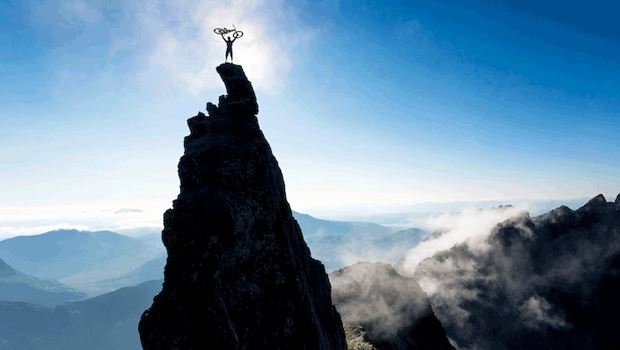 Danny MacAskill summits a steep peak on the Isle of Skye for his recent video, The Ridgeline.
Danny MacAskill summits a steep peak on the Isle of Skye for his recent video, The Ridgeline.
That said, as the young and foolish open new terrain for human experience, those who follow can hopefully avoid their mistakes and enjoy the experience without taking too many risks. When does a “calculated risk” become a “stupid risk?” I am not sure, but probably when the risk taker becomes paraplegic or dead, and those who love them suffer. I will never forget the sherpa, who upon observing the ridiculous cost/risk/effort of the first man to ski Everest, said “Westerners have too much money.”
- Casey E.
#3: Action Sports & Eastern Thinking
I don’t think it’s always a lack of spirituality, but rather it might be a different path in the search of happiness from the most. I see something in common between the eastern thinking and extreme sport athletes’ patterns of thought: living here and now is at the base of the eastern ideas, and is what makes extreme sports so rewarding. In both cases, to do what you must overcome fear, which is in eastern thinking a side effect of being attached to material things (even life itself as we understand it). Once you overcome fear and let it go, you’ll find blissfulness.
Sure that it can became addictive, but I don’t think it isn’t necessarily bad. Go ask to someone that that had experienced true blissfulness through meditation to stop seeking it, even if it means to leave their material goods, their parents and friends to go live in the mountains and meditate the rest of their life..we all know what the response would be, right?
The whole debate on family (and I do make an exception for the ones who have kids) became for the same reason pointless. It is the inability to detach and accept the true nature of life that has as a fundamental part of itself, death and loss.
-Matteo Mazza
#4: Young Athletes & Critical Thinking
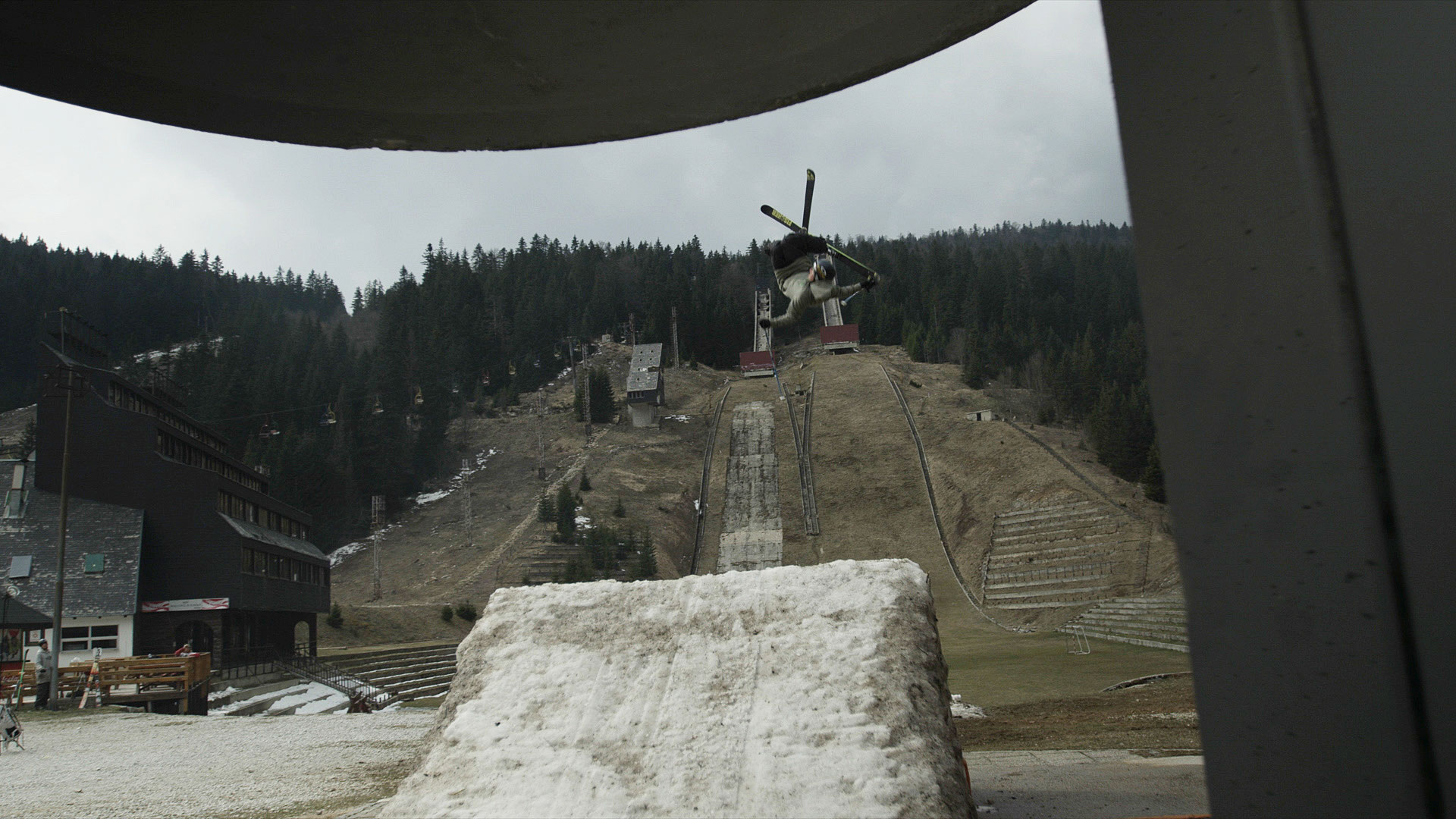 Olympic Gold medalist Joss Christensen backflips over a vacant Sarajevo Olympic landscape in Almost Ablaze.
Olympic Gold medalist Joss Christensen backflips over a vacant Sarajevo Olympic landscape in Almost Ablaze.
These athletes have taken a calculated risk. They know the odds for success and for catastrophic injury and death. The rest of us watching have to realize that we can’t just jump in and follow them. It’s tragic when someone loses their life, but I don’t think these athletes would want it any other way. But I am concerned when a young athlete really pushes the envelope… they are great athletes, but their critical thinking skills aren’t really developed yet. I hope these guys have incredible mentors and coaches who can tell them “no” when they need to hear it.
-Frederica Jerril
#5: Balance Is The Key
Both sides of the article are true. On one hand, risk is incredibly compelling; being stripped away from all the safety buffers and having nothing but your own skill, fortitude, and luck is an important part of being human. Being in a situation which could easily kill you brings a thrill and a humility you can find nowhere else.
Another important part of being human is to connect with others, love them and to give them priority over yourself. To deny yourself and the people around you of what you can bring into their lives is either a mistake or selfish. The greatest thing a person can do is lay down their life (literally or figuratively) for another. If that means fewer days out in avalanche terrain so my grandkids can have someone to spoil them, then so be it; they’re more important than I am.
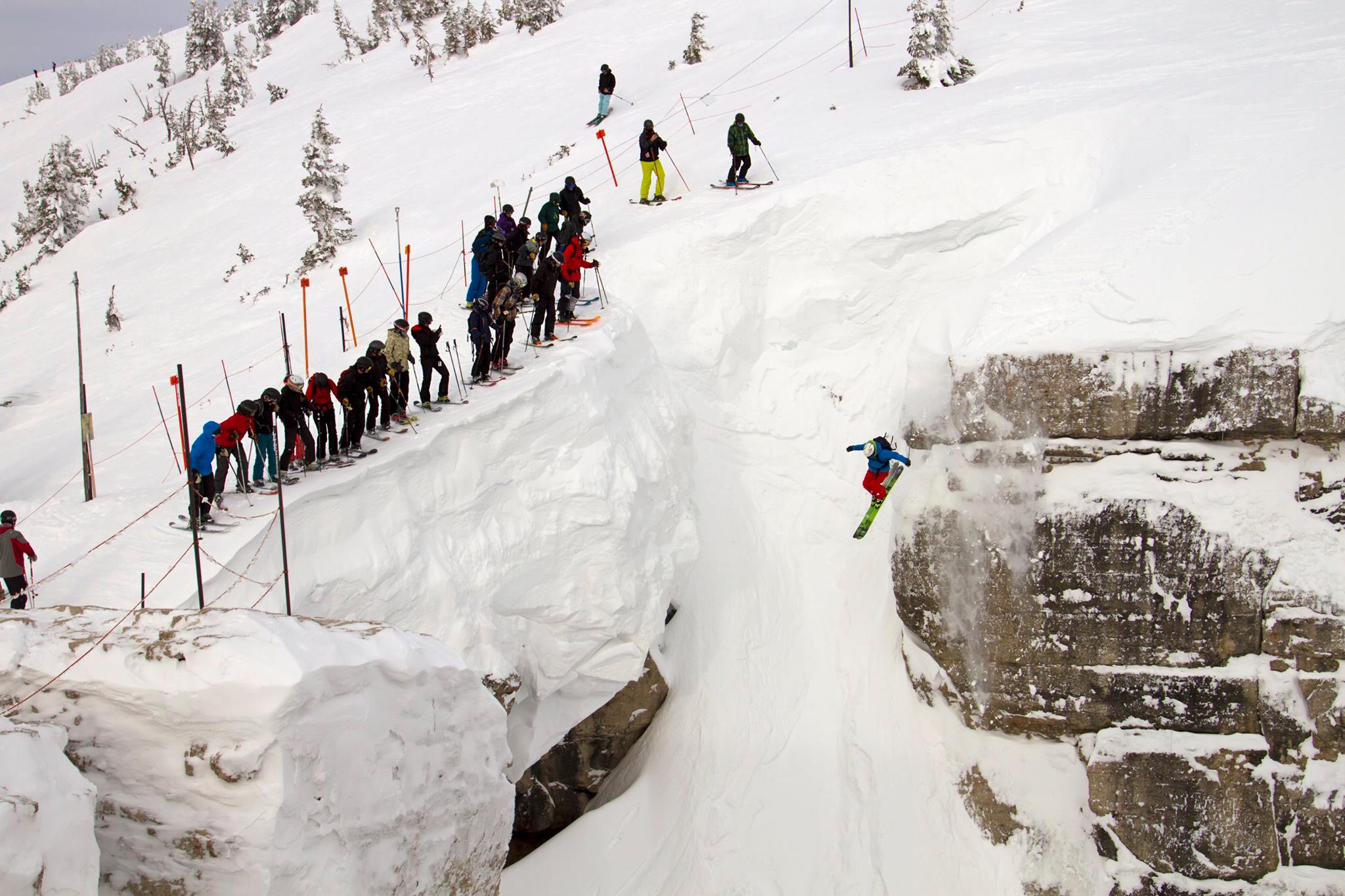 An unknown skier spins off the huge drop into Corbet's Couloir at Jackson Hole Mountain Resort.
An unknown skier spins off the huge drop into Corbet's Couloir at Jackson Hole Mountain Resort.
Balance is the key. I plan on dying in my sleep at 75 or 80 surrounded by the people I love while having lived a life full of skiing, climbing and pushing my limits as safely as possible. To do less than that would be unfair to both myself and the people around me.
All that to say that I don’t think we should celebrate or condemn deaths in action sports. We should mourn for the loss and then learn from their mistakes so we can continue to push the boundaries of what we do safely.
-Jeff Johns
#6: The Risk Isn’t Exceptional
With all action sports, although death is not infrequent, there is not great enough risk involved to be considered irrational. Driving your car down the street is no less dangerous, nor any more rational, than shredding gnarly lines or doing double backflips, especially when the sport is practiced with respect to the consequences involved.
-Panda Poles
#7: It’s a Different View at 60
As a long-time adrenaline junkie and client/friend of Doug Coombs, I’ve thought a lot about this, particularly after Doug and Shane’s deaths.
As I see it, it’s only OK to take high levels
of risk when:
1) You have no dependents
2) Significant others are OK with you taking high levels of risk
3) Your activities don’t put others at risk
I’m 60 years old now, and throughout my lifetime I’ve been into thrill sports: inverted ski aerials, downhill racing, rock climbing, alpine mountaineering, motocross, scuba diving, surfing, wavesailing, kitesurfing, and whitewater kayaking, plus I was an instrument-rated private pilot. I’ve been on 9 heli-skiing trips, including 3 to Valdez, Alaska. Even at my age, I still yearn for adventure.
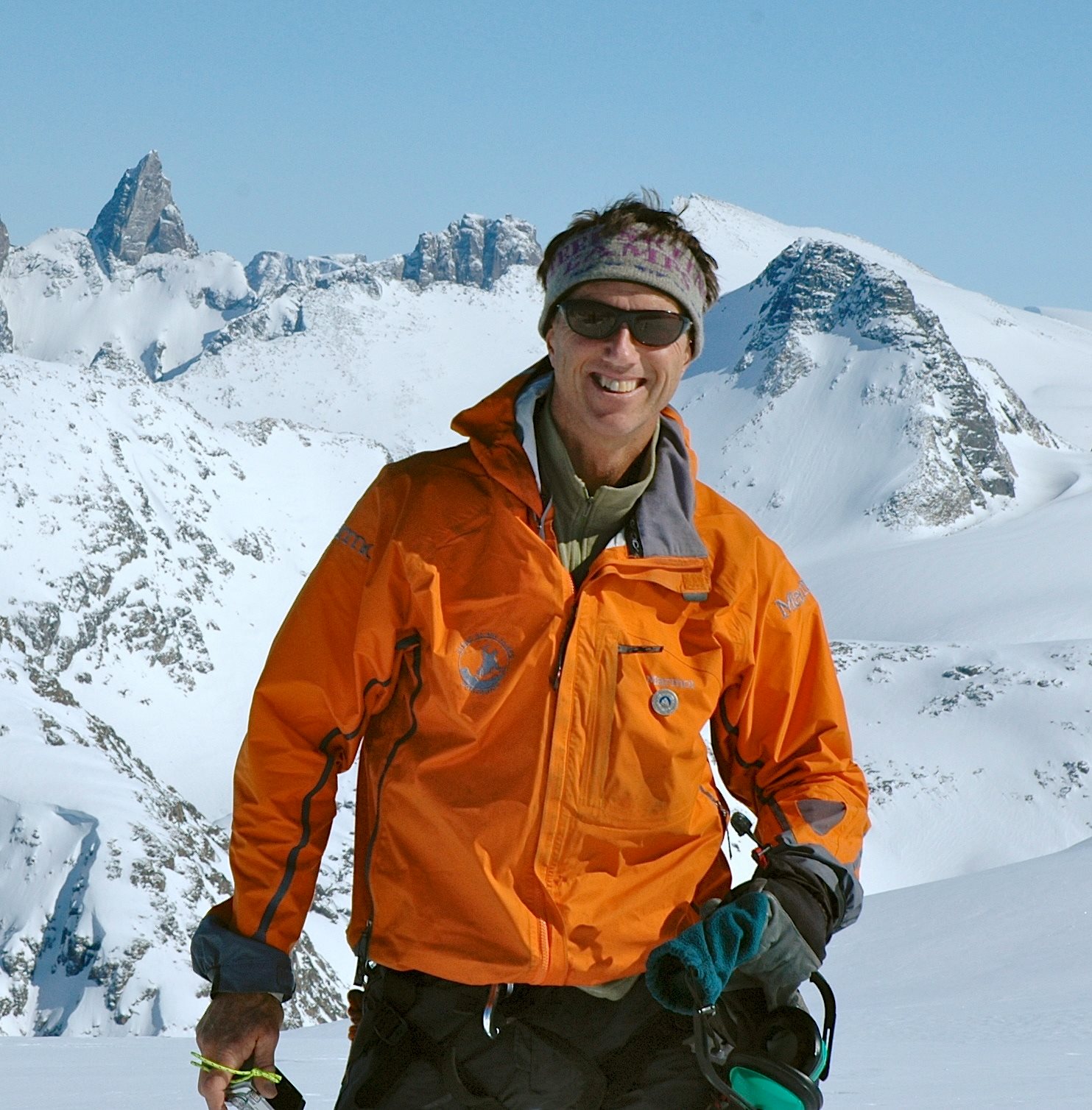 Doug Coombs, a true legend in the ski community, died in La Grave, France, in 2006. Doug Coombs Foundation photo.
Doug Coombs, a true legend in the ski community, died in La Grave, France, in 2006. Doug Coombs Foundation photo.
However, after completing a climb of the Price Glacier route on Mt. Shuksan in my forties, and watching numerous avalanches sweep our tracks off the route the next morning, I had an epiphany that leaving raising our two young children to my wife alone would have been horribly selfish of me, and guilt would haunt me from that point on if I continued taking the levels of risk I was taking. It still breaks my heart to know that Doug and Shane’s wives have to raise their kids without fathers.
On clear days, I look out at Liberty Ridge on Rainier from my house and still imagine climbing it, but I don’t regret giving up climbing—I had too many close brushes with death and know that the odds were against me. It now disturbs me to hear of rescue attempts on Rainier that cause injuries or fatalities to the rescuers—ethically, I don’t know exactly where to draw the line, but I applaud the decision this June not to try to recover the bodies of the May disaster on Liberty Ridge—for them to take any risk at all made no sense.
Yes, it’s true that pursuing high-risk adventures makes living sweeter, but you really can’t justify it when there are others who depend on you. That’s my take.
-Peter Pawlak
#8: Stunts, Statistics, and Physics
First off, life is a gift it, and we chose to make it so or not. Obviously action sports pros are really living life to the fullest. There is, however, something in many action sports participants and culture that rewards “cheating death” and “close calls.” I do see some action sports pros who savor an outstanding athletic performance and view close calls as a mistake to be learned from, not celebrated. I think when someone’s thrill of pulling off a low-probability performance is their primary motivation, as opposed to athletic excellence, the sport is pushed into what I would call a stunt.
While I find stunt performances entertaining in some manner, and even though it may require athletic talent, it isn’t sport, we have a word for that….it’s a stunt. To me when you attempt an athletic feat that is well beyond your experience and proven performance level, and the consequences of failure are high (debilitating injury or death), then you have entered the world of stunts.
Where it gets tricky these days is that equipment is better, and to be honest, athletes are better. The evolution has gone on since action sports began. Athletes are better prepared and have the benefit of the experience of all those who came before them in honing their skills. It is also human nature to have more confidence in something you want to try if you know of someone who did something similar. I think this is why we see so many action sports athletes pushing the “line” further and further out. Each generation of action sports athletes builds on the previous.
The situation that many of even the best prepared and intentioned action sports pros run into is essentially physics and statistics, rather than a lack of talent. The “line” has been pushed so far in these sports that people are running into the limitations of physics. How high can a person cliff jump on skis, really? How fast can the mind respond when the physical situation requires nano-second response time? There are physical limitations no matter one’s strength or talent. In these times, I see many action sports pros pushing up against those laws of physics. Which brings me to the statistical element.
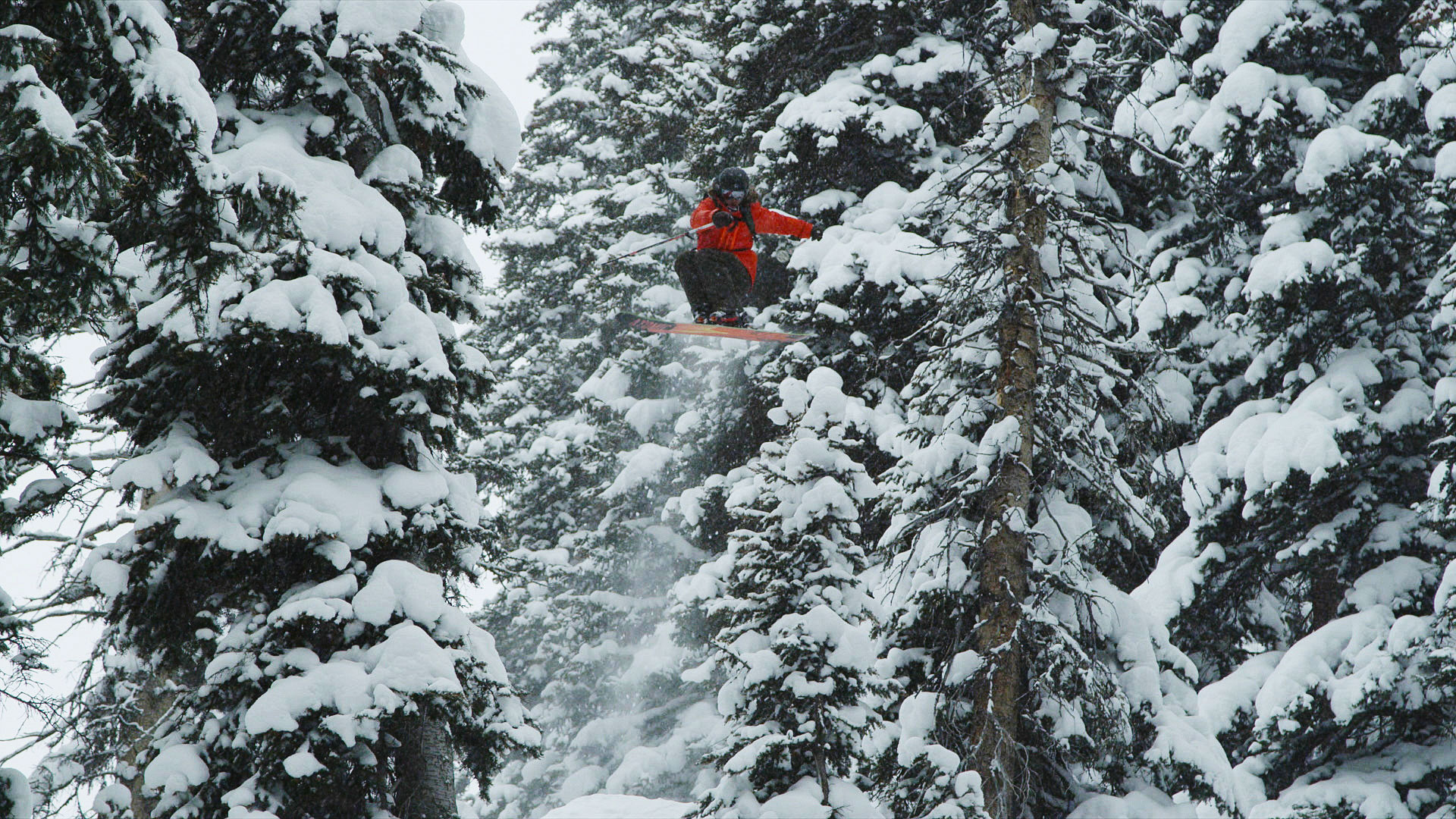 Sage Cattabriga-Alosa blasts through the trees during the filming of Almost Ablaze.
Sage Cattabriga-Alosa blasts through the trees during the filming of Almost Ablaze.
Most action sports performances require a great deal of precision. Unfortunately, most of them are done with a series of variables that conflicts with this. Jumping a gap on skis is dependent on snow speed (wax), the athlete’s take-off, his performance of the stunt in the air, and cross or headwinds no matter how slight, and his landing. Each of these elements generates a degree of uncertainty. Because of all these variables and changing conditions, and the fact that the performance has to be near perfect for proper execution; the more you do a hard trick, the higher the probability something will go wrong. Just the fact that action sports athletes do these things over and over is probably the biggest statistical factor that makes a high consequence event more likely.
So are these deaths ok? It is not a simple question. Having watched many of my friends die, on a personal level, I have to say no. Life was stripped from these people never to return. That is not a good thing. Should something to be done to stop the trend? Yes, but not rules. We need to educate ourselves in the action sports community as to the true risks involved and make informed decisions. Taking risk is part of the human experience, but I hate to see people throw their loves away.
If you are an action sports pro, treat it like a profession. That means analyzing the probabilities for mishap weighed against the consequences of failure. In most cases this doesn’t limit the athlete but rather empowers them by giving them the confidence everything has been done to limit the risk to their personal level of acceptance.
If you are an action sports pro, treat it like a profession. That means analyzing the probabilities for mishap weighed against the consequences of failure. In most cases this doesn’t limit the athlete but rather empowers them by giving them the confidence everything has been done to limit the risk to their personal level of acceptance. If you, as a pro, can’t sit down and evaluate these factors prior to performing a high risk activity, then you aren’t really a pro.
So by my reckoning, I applaud the athletic achievement of athletes I know treat their sport and environment with respect and prepare well for their sport. I am less than impressed with those who just ‘send it’ and hope it all works out.
-Sarge 1957
We'd like to thank the thoughtful members of our audience willing to share their differing and honest perspectives on a very difficult subject. If you have your own to share, we'd invite you to do so in the comments below. Thanks.



kailas
October 21st, 2014
Why don’t you hire someone actually from the mountains TGR? Oh ya, your all eastern transplants.
adoit
October 24th, 2014
What on earth does the writer not being from the mountains have to do with this article, Kailas? If that’s really your only take-away from a serious discussion about death, you have some serious maturing to do, no matter your physical & legal age.